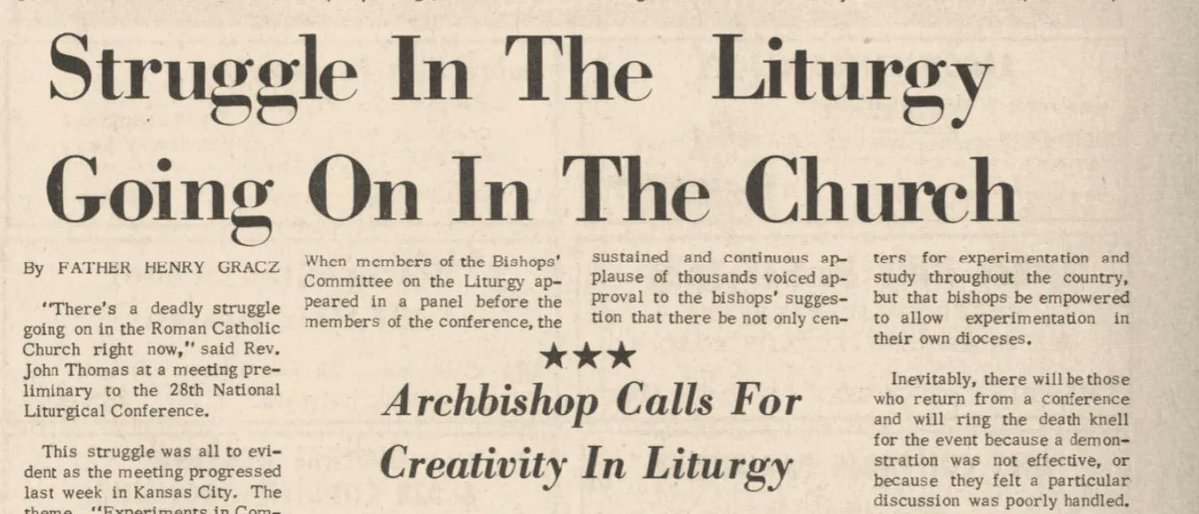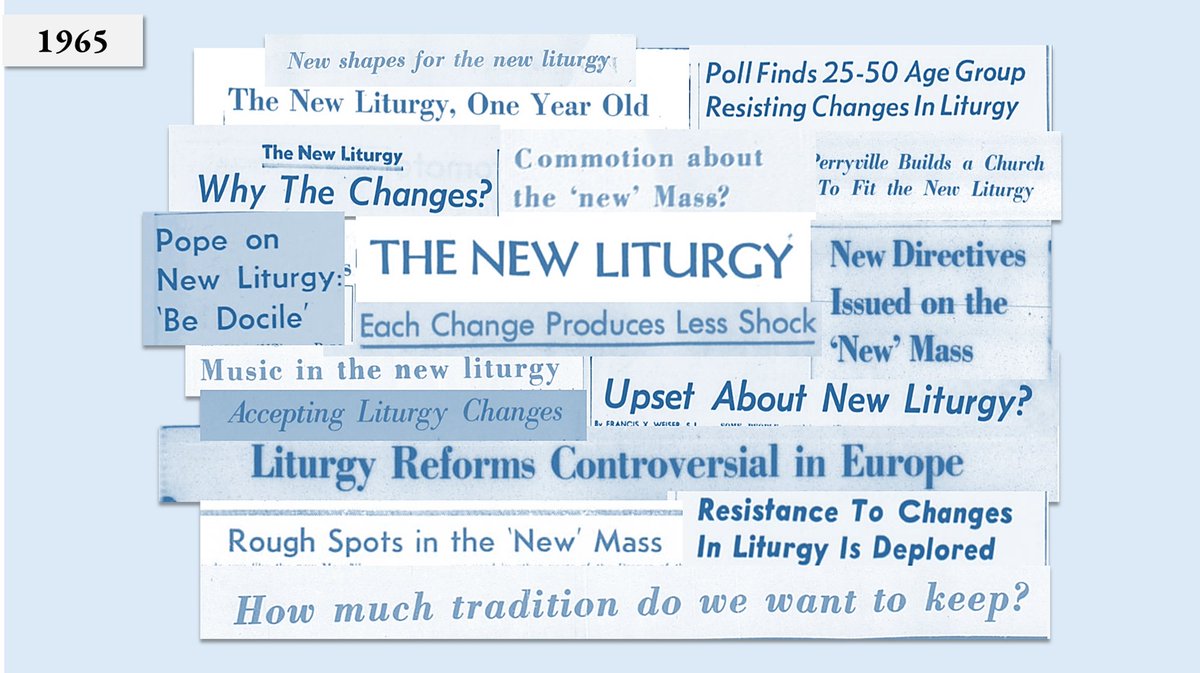Good morning! We've got a bit of a doozy for #MissalMondays
The Saint Jerome Missal, published in 4 volumes in 1964.
It features the most .... unusual .... art we've ever seen in a hand missal (and that's saying something!)

The Saint Jerome Missal, published in 4 volumes in 1964.
It features the most .... unusual .... art we've ever seen in a hand missal (and that's saying something!)


Published by The Catholic Press of Chicago, it was clearly intended to be a new, major "flagship" missal property which was chock full of selling-point features.
They pulled together a large (and slightly unusual) cast of experts to contribute, including Father Andrew Greeley
They pulled together a large (and slightly unusual) cast of experts to contribute, including Father Andrew Greeley

(interesting note: it holds an imprimatur of January 1963 and a copyright date of 1964, and does not survive in many copies.
It's clear this was immediately overtaken and made irrelevant by the many sudden a d rapid changes to the mass which happened in 1964)
It's clear this was immediately overtaken and made irrelevant by the many sudden a d rapid changes to the mass which happened in 1964)
Now to the good stuff... The art!
It was lavishly illustrated by award-winning Dutch artist Jan Sleper in a startlingly modern homage to traditional woodcut & line art.
More about the artist here: rkd.nl/en/explore/art…


It was lavishly illustrated by award-winning Dutch artist Jan Sleper in a startlingly modern homage to traditional woodcut & line art.
More about the artist here: rkd.nl/en/explore/art…



The missal typesetting was bland and workman-like, but they tried to make up for it with other gimmicky features.
The Ordinary of the Mass used blank boxes and a system of icons & numbered mass parts, to help you find the propers of the day

The Ordinary of the Mass used blank boxes and a system of icons & numbered mass parts, to help you find the propers of the day


It also featured a 16-page "art gallery" insert of classic artistic works, which feels bizarre given the juxtaposition with the rest of the art throughout 

And lastly, it retained the popular series of color photos of the different actions at Mass for which Catholic Press missals were known.
These were taken in 1954 at Our Lady of the Angels in Chicago, and the priest is Rev. Thomas Conley
These were taken in 1954 at Our Lady of the Angels in Chicago, and the priest is Rev. Thomas Conley

• • •
Missing some Tweet in this thread? You can try to
force a refresh
















